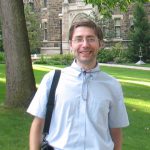The Department of Biology and Ecology
Research Topics:
The Department explores polar biology and ecology. Our interest is focused on life surviving in extreme environments; our main areas of study are thus marine biology, terrestrial ecology, and bioprospecting, culminating in nature conservation.
In particular, our research lines are:
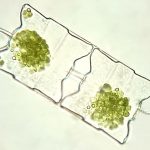
1.1. Diversity, dynamics and interaction of communities of phyto- and bacterioplankton of the maritime Antarctic during global climate changes.
Communities of marine phyto- and bacterioplankton are abundant, their genetic diversity enormous. They are the key players keeping the equilibrium between the fixation and production of CO2 and have a sizable impact on other elements’ biogeochemistry (N, S, Fe). The link connecting the bacterial and the phyto components is a fundamental research problem. Their interaction orders nutrients’ cycles and governs the productivity and endurance of sea ecosystems, as well as the carbon balance between the ocean and the atmosphere. This is felt all the stronger in the maritime Antarctic where the advancement of climate change is very apparent and disruptions in plankton productivity directly impact other sea dwellers – birds, mammals, benthos and terrestrial communities.
In 2019, the Akademik Vernadsky Station started monitoring the dynamics and interdependence of phyto- and bacterioplankton. This entails analyzing the creatures’ taxonomic and functional diversity and deciphering factors shaping their annual and seasonal dynamics, and adaptations to the antarctic conditions. The research meets SCAR priorities and lies within the AntEco, AnT-ERA and AntClimnow frameworks.
1.2. Current state and dynamics of sea mammals’ communities of the West Antarctic.
Mammals are edificators of sea ecosystems and important indicators of their state. These apex predators of the Southern ocean are a natural focal point for biological investigations in the region. In the XXth century, growing commercial whaling decimated cetaceans of the West Antarctic. Their numbers plummeted; their species composition was altered.
One of our main lines of research since 2018 has been evaluating the current state and dynamics of communities of sea mammals in the West Antarctic under the influence of the ongoing climate change. By dint of year-round observations combining photo-identification, molecular and acoustic approaches, we carry on comprehensive studies of their population structures, reproduction and feeding behaviours.
We look for regularities in the spatial distribution of mammals and birds using GIS, discovering places where they occur in large quantities and tracking their crucial developmental stages. If a dead animal is found to be autopsied, we check its tissues for stable organic pollutants.
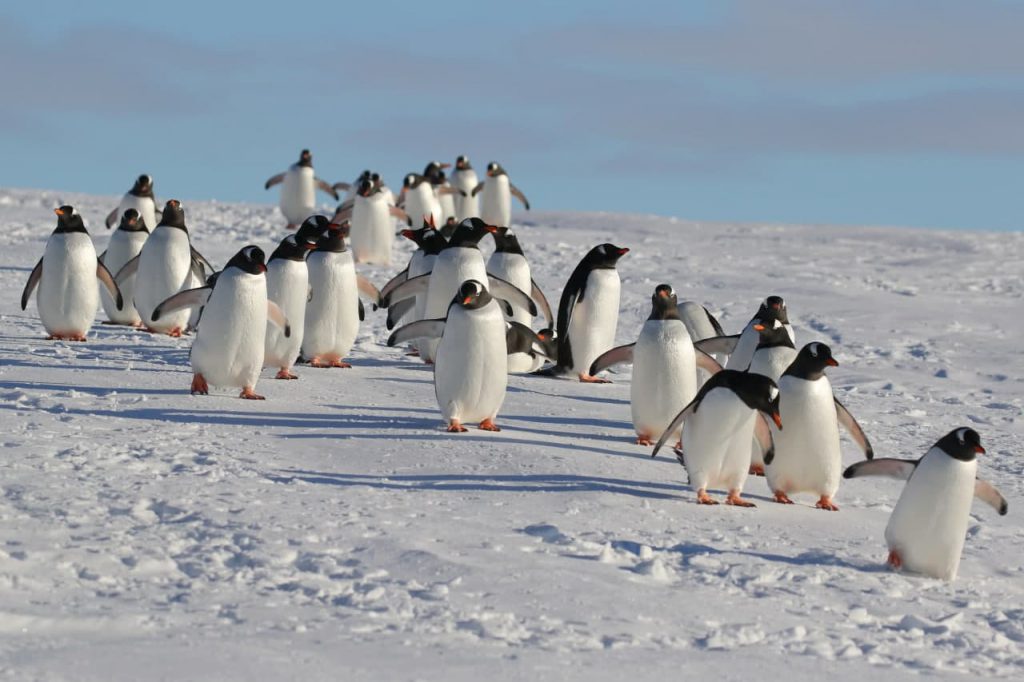
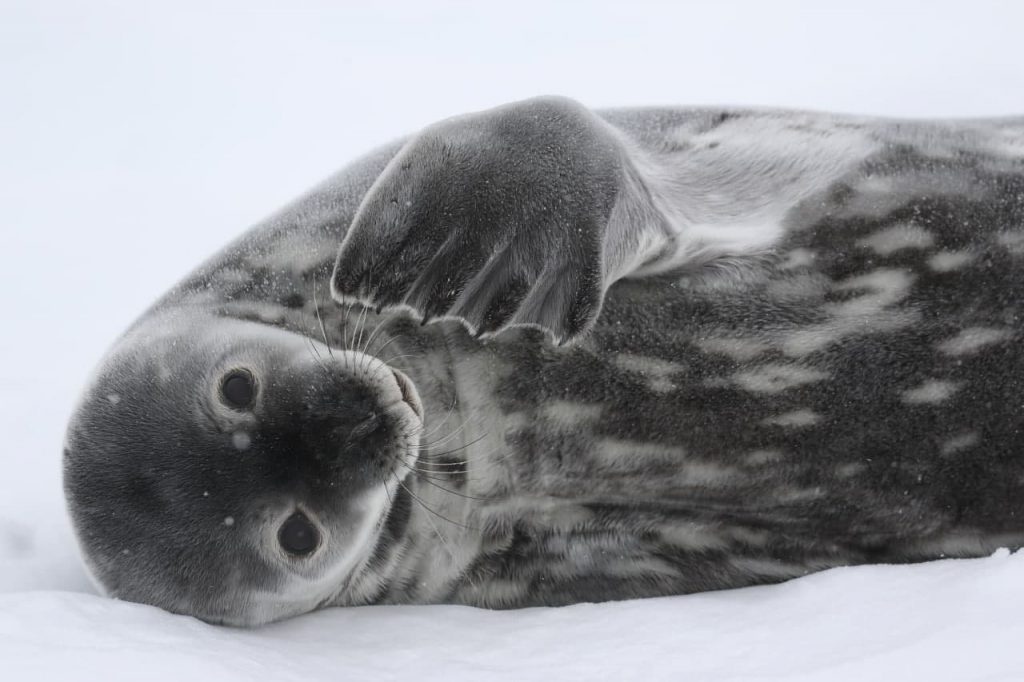
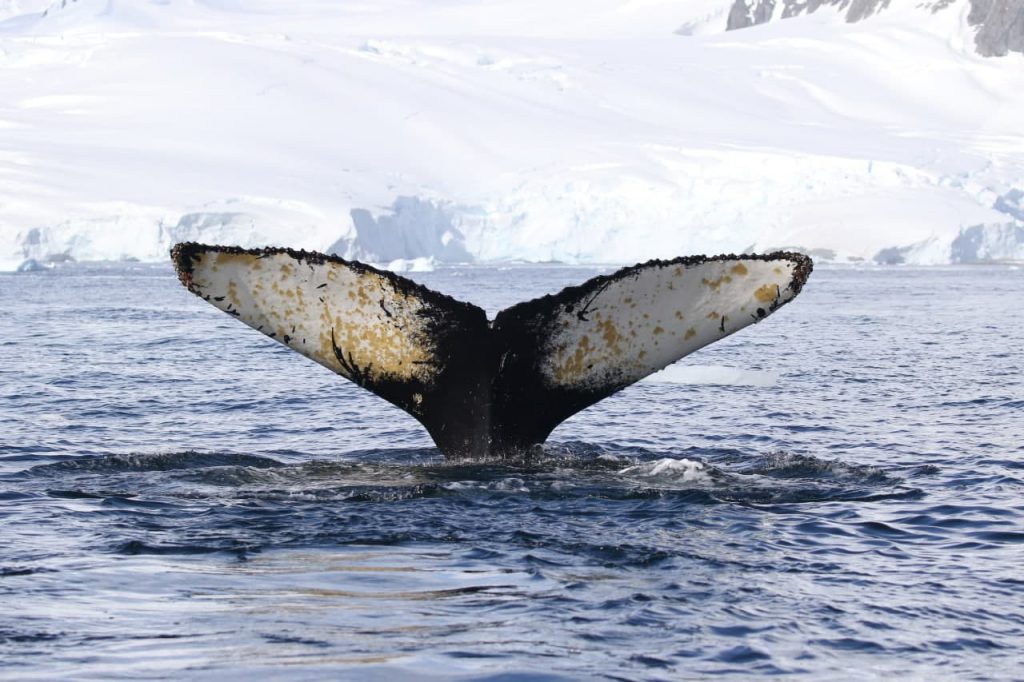
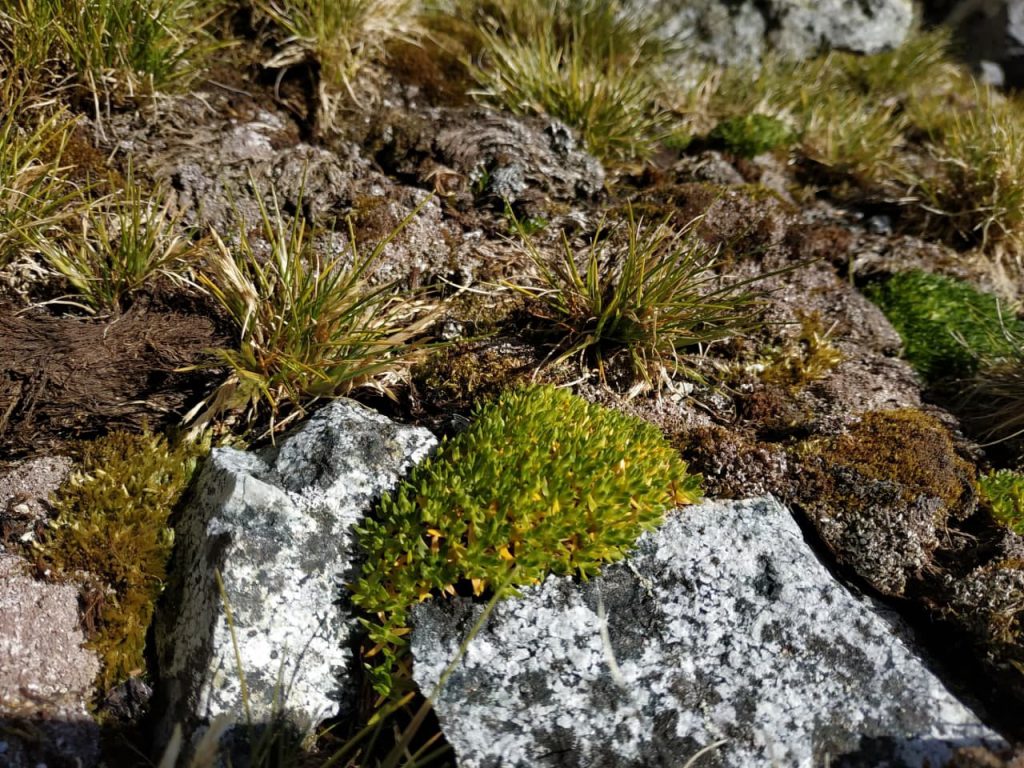
Antarctic terrestrial ecosystems exist amidst glaciers and snow. They have low biodiversity. Typically, they strongly depend on the input from prokaryotes, cryptogams and invertebrates, while the flora of vascular plants in the Antarctic numbers only two species, Deschampsia antarctica and Colobanthus quitensis. As organic matter is accumulated, habitats are created in perhaps the harshest conditions known on Earth. The Argentine Islands, where the Akademik Vernadsky Station is located, boast forty-nine species of bryophytes, seven liverworts, and 123 lichens, with algae and fungi also present. The ecosystems host some infrequent invertebrates. The whole (as well as the parts) is sensitive to climate change and to anthropogenic pressure, requiring steady monitoring and protection.
The Department’s take on the terrestrial ecosystem research includes:
- regular monitoring of the vascular plants’ populations in the Argentine Islands area. Tracking population parameters at the reference sites and surveying for new ones;
- recording the diversity of bryophytes, lichens and other ecosystem components to determine which properties of the terrestrial communities might be used to trace climate change, penguins’ impact etc.;
- investigating which microbes are associated with antarctic plants, what is their role in the plants’ adaptation to unfavourable living conditions, and how the microbiome functions reflect ornithogenic impact;
- and last but not least, unraveling the origin and current genetic heterogeneity of antarctic invertebrates: dipterans (Belgica antarctica), freshwater copepods (Boeckella poppei), springtails and tardigrades.
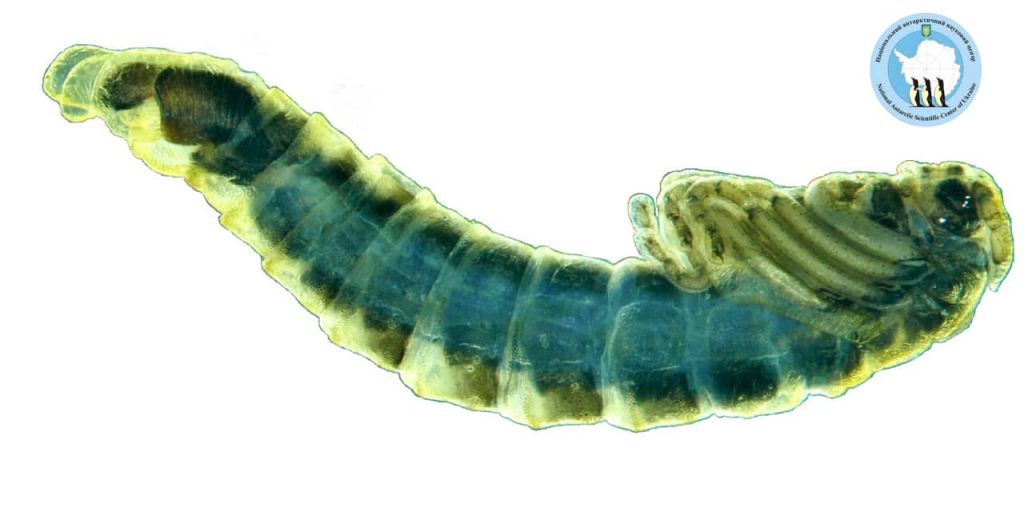
We study the diversity of microorganisms, plants and animals and their adaptations to the severe environment in the framework of programs “State of theThe Department’s take on the terrestrial ecosystem research includes: Antarctic Ecosystem” and “Antarctic Thresholds – Ecosystems Resilience and Adaptation”.
Antarctic organisms adapt to their conditions through concerted action of various systems and a whole number of BAS. That’s why the plants, animals and microbes are promising sources of valuable substances to use in biotechnology and pharmaceutics. Our research interests in particular concern the beneficial properties of the antarctic microorganisms and phenolic BAS of the plants. In order to do this we culture a collection of antarctic organisms, allowing us to not take more material from nature.

One tool to preserve unique Antarctic ecosystems is to regulate tourist flow. To do this, one has to prepare, uphold and review the guidelines on how to visit specific areas of the region, such as the Argentine Islands. We work on establishing territories with official protected status (Antarctic Specially Protected Area – ASPA).
Our interests include rare plants of the Ukrainian flora, the Black Sea inhabitants’ adjustment to global impacts, and the genetic mechanisms of adaptation to environmental conditions with Drosophila melanogaster as the model species.
You can learn more about the relevant research group here.
Our research connections
The Department partners with several scientific institutions in Ukraine: the Institute of Molecular Biology and Genetics of the National Academy of Sciences of Ukraine, Institute of Food Technology and Genomics (NASU), M. Hryshko National Botanical Garden (NASU), Taras Shevchenko National University of Kyiv, Ivan Franko National University of Lviv, etc. We also co-work with scientists and nature conservationists from Poland, Germany, the USA, Lithuania, Belarus, Turkey, Malaysia, Slovakia, Czechia, and other countries.
2024
| Andrzejowska, A., Hájek, J., Puhovkin, A., Harańczyk, H., & Barták, M. (2024). Freezing temperature effects on photosystem II in Antarctic lichens evaluated by chlorophyll fluorescence. Journal of Plant Physiology, 296, 154192. https://doi.org/10.1016/j.jplph.2024.154192 |
| Iungin, O., Prekrasna-Kviatkovska, Y., Kalinichenko, O., Moshynets, O., Potters, G., Sidorenko, M., Savchuk, Y., & Mickevičius, S. (2024). Endophytic bacterial biofilm-formers associated with Antarctic vascular plants. Microorganisms, 12(10), 1938. https://doi.org/10.3390/microorganisms12101938 |
| Iungin, O., Prekrasna-Kviatkovska, Y., Kalinichenko, O., Savchuk, Y., Krainova, Y., Sidorenko, M., & Mickevičius, S. (2024). Antifungal activity of endophytic bacteria associated with Antarctic vascular plants. In Proceedings of the 10th International Conference on Advanced Materials and Systems (ICAMS 2024) (pp. 107–110). Bucharest: INCDTP. https://doi.org/10.2478/9788367405805-015 |
| Iungin, O., Prekrasna-Kviatkovska, Y., Kalinichenko, O., Savchuk, Y., Sidorenko, M., & Mickevičius, S. (2024). Biocontrol potential of Antarctic endophytic bacteria. Український антарктичний журнал, 2, 219–228. https://doi.org/10.33275/1727-7485.2.2024.738 |
| Krzewicka, B., Parnikoza, I., Ivanets, V., Yevchun, H., & Smykla, J. (2024). Diversity and distribution of the lichen genus Umbilicaria in the Argentine Islands–Kyiv Peninsula region, the maritime Antarctic. Scientific Reports, 14(1), Article 65806. https://doi.org/10.1038/s41598-024-65806-7 |
| Lohmann, R., Vrana, B., Muir, D., Smedes, F., Sobotka, J., Zeng, E. Y., Bao, L.-J., Allan, I. J., Astrahan, P., Bidleman, T., Crowley, D., Dykyi, E., Estoppey, N., Fillmann, G., Jantunen, L., Kaserzon, S., Maruya, K. A., McHugh, B., Newman, B., … Wong, C. S. (2024). AQUA-GAPS/MONET-derived concentrations and trends of PAHs and polycyclic musks across global waters. Environmental Science & Technology. Advance online publication. https://doi.org/10.1021/acs.est.4c03099 |
| Miryuta, N., Prekrasna-Kviatkovska, I., Myryuta, G., Poronnik, O., & Parnikoza, I. (2024). Rhizosphere bacterial community influence on Deschampsia antarctica É. Desv. adaptability in context of temperature near plants in local spatial scales of Galindez Island, Argentine Islands (the maritime Antarctic). Czech Polar Reports, 14(1), 45–59. https://doi.org/10.5817/cpr2024-1-6 |
| Mishra, K. B., Rosputinský, M., Grieš, M., & Puhovkin, A. (2024). Photoprotective mechanisms activated in Antarctic moss Chorisodontium aciphyllum during desiccation. Czech Polar Reports, 14(1), 1–14. https://doi.org/10.5817/cpr2024-1-1 |
| Prekrasna-Kviatkovska, Y., Parnikoza, I., Yerkhova, A., Stelmakh, O., Pavlovska, M., Dzyndra, M., Yarovyi, O., & Dykyi, E. (2024). From acidophilic to ornithogenic: Microbial community dynamics in moss banks altered by gentoo penguins. Frontiers in Microbiology, 15, 1362975. https://doi.org/10.3389/fmicb.2024.1362975 |
| Puhovkin, A., & Parnikoza, I. (2024). Do spectral reflectance indices distinguish between the greenness in three different moss species in moss banks on Galindez Island (Argentine Islands)? Czech Polar Reports, 14(1), 90–101. https://doi.org/10.5817/cpr2024-1-10 |
| Rubtsova, N. Y., Chaudhary, A., Glotov, S., & Kuzmina, T. A. (2024). Description of Pseudobenedeniella johnstoni sp. n. (Monogenea: Capsalidae) from the gills of Antarctic black rockcod, Notothenia coriiceps Richardson in coastal waters of West Antarctica. Helminthologia, 61(4), 327–344. https://doi.org/10.2478/helm-2024-0037 |
| Rybalko, S., Poronnik, O., Myryuta, G., Balanda, A., Arkhypova, M., Starosyla, D., Deryabin, O., Puhovkin, A., Parnikoza, I., & Kunakh, V. (2024). Antiviral activity of Deschampsia antarctica plant extracts in vitro. Czech Polar Reports, 14(2). https://doi.org/10.5817/CPR2023-2-18 |
2023
| A., Váczi, P., Puhovkin, A., Mishra, K. B., & Giordano, D. (2023). Resistance of primary photosynthesis to photoinhibition in Antarctic lichen Xanthoria elegans: Photoprotective mechanisms activated during a short period of high light stress. Plants, 12(12), 2259. https://doi.org/10.3390/plants12122259 |
| Andreev, I. O., Mel’nyk, V. M., Parnikoza, I. Yu., & Kunakh, V. A. (2023). Molecular organization and intragenomic variability of intergenic spacer of 5S rRNA genes in Colobanthus quitensis. Cytology and Genetics, 57(5), 399–405. https://doi.org/10.3103/S0095452723050018 |
| Barták, M., Hájek, J., Halıcı, M. G., Bednaříková, M., Casanova-Katny, |
| Ihtimanska, M. K., Kovalenko, P. A., Michailova, P. V., & Parnikoza, I. Yu. (2023). Larval morphology of Belgica antarctica Jacobs, 1900 (Diptera, Chironomidae, Orthocladiinae) from central part of the maritime Antarctic and deformities found in the larvae. Zootaxa, 5311(3), 405–416. https://doi.org/10.11646/zootaxa.5311.3.5 |
| Ivanets, V., Wierzgoń, M., Yevchun, H., & Parnikoza, I. (2023). Range extensions for moss species on the West Side of the Antarctic Peninsula. Cryptogamie, Bryologie, 44(2). https://doi.org/10.5252/cryptogamie-bryologie2023v44a2 |
| Komplikevych, S., Maslovska, O., Peretyatko, T., Moroz, O., Diakiv, S., Zaritska, Ye., Parnikoza, I., & Hnatush, S. (2023). Culturable microorganisms of substrates of terrestrial plant communities of the maritime Antarctic (Galindez Island, Booth Island). Polar Biology, 46(1), 1–19. https://doi.org/10.1007/s00300-022-03103-7 |
| Kotov, D., Richards, P. G., Reznychenko, M., Bogomaz, O., Truhlík, V., Nossal, S., Mierkiewicz, E., Zhivolup, T., Domnin, I., Miyoshi, Y., Tsuchiya, F., Kumamoto, A., Kasahara, Y., Kitahara, M., Nakamura, S., Matsuoka, A., Shinohara, I., & Hairston, M. (2023). Interhemispheric ionosphere–plasmasphere system shows a high sensitivity to the exospheric neutral hydrogen density: A caution of the global reference atmospheric model hydrogen density. Frontiers in Astronomy and Space Sciences, 10, 1113706. https://doi.org/10.3389/fspas.2023.1113706 |
| Lohmann, R., Vrana, B., Muir, D., Smedes, F., Sobotka, J., Zeng, E. Y., Bao, L.-J., Allan, I. J., Astrahan, P., Barra, R. O., Bidleman, T., Dykyi, E., Estoppey, N., Fillmann, G., Greenwood, N., Helm, P. A., Jantunen, L., Kaserzon, S., Macías, J. V., … Wong, C. S. (2023). Passive-sampler-derived PCB and OCP concentrations in the waters of the world─First results from the AQUAGAPS/MONET network. Environmental Science & Technology, 57(25), 9342–9352. https://doi.org/10.1021/acs.est.3c01866 |
| Pallin, L. J., Kellar, N. M., Steel, D., Botero-Acosta, N., Baker, C. S., Conroy, J. A., Costa, D. P., Johnson, C. M., Johnston, D. W., Nichols, R. C., Nowacek, D. P., Read, A. J., Savenko, O., Schofield, O. M., Stammerjohn, S. E., Steinberg, D. K., & Friedlaender, A. S. (2023). A surplus no more? Variation in krill availability impacts reproductive rates of Antarctic baleen whales. Global Change Biology, 29(8), 2108–2121. https://doi.org/10.1111/gcb.16559 |
| Polishchuk, A., Kayastha, P., Kovalenko, P., Parnikoza, I., & Kaczmarek, Ł. (2023). New records of tardigrades from the Danco and Graham Coasts, the maritime Antarctic. Annales Zoologici, 73(1). https://doi.org/10.3161/00034541ANZ2023.73.1.002 |
| Poronnik, O., Twardovska, M., Kunakh, V., Andreev, I., Drobyk, N., Navrotska, D., Nuzhyna, N., Konvalyuk, I., Myryuta, G., Ivannikov, R., & Parnikoza, I. (2023). Development, integrative study and research prospects of Deschampsia antarctica collection. Polish Polar Research, 44(1), 41–68. https://doi.org/10.24425/ppr.2023.144537 |
| Puhovkin, A., Hájek, J., Giordano, D., Sekerák, J., & Barták, M. (2023). Cryoresistance differences between species of autotrophs from polar regions sensed by chlorophyll fluorescence. Problems of Cryobiology and Cryomedicine, 33(1), 25–37. https://doi.org/10.15407/cryo33.01.025 |
| Puhovkin, A., Smykla, J., Váczi, P., & Parnikoza, I. (2023). Spectral characteristics of bryophyte carpet and mat subformation showing a vitality-dependent color pattern: Comparison for two distant regions of maritime Antarctica. Czech Polar Reports, 13(1). https://doi.org/10.5817/CPR2023-1-9 |
| Puhovkin, A., Smykla, J., Váczi, P., & Parnikoza, I. (2023). Spectral characteristics of bryophyte carpet and mat subformation showing a vitality-dependent color pattern: Comparison for two distant regions of maritime Antarctica. Czech Polar Reports, 13(1). https://doi.org/10.5817/CPR2023-1-9 |
| Serga, S., Maistrenko, O. M., Kovalenko, P. A., Tsila, O., Hrubiian, N., Bilokon, S., Alieksieieva, T., Radionov, D., Betancourt, A. J., & Kozeretska, I. (2023). Wolbachia in natural Drosophila simulans (Diptera: Drosophilidae) populations in Ukraine. Symbiosis, 91(2), 187–196. https://doi.org/10.1007/s13199-023-00899-8 |
| Sotnik, G., Spinova, Y., Sotnik, T., Polotska, O., Kysil, O., Krakovska, S., Diachuk, O., Bezvershenko, Y., Berezko, O., Beldavs, V., & Andrusevych, A. (2023). How to help Ukrainian scientists overcome Russia’s invasion and advance sustainability. Proceedings of the National Academy of Sciences, 120(6), e2219792120. https://doi.org/10.1073/pnas.2219792120 |
| Syrota, Y. Y., Kuzmin, Y. I., Lisitsyna, O. I., Salganskiy, O. O., Dykyy, I. V., Korol, E. M., du Preez, L. H., Dmytrieva, I. G., & Kuzmina, T. A. (2023). Infection patterns of helminth community in black rockcod Notothenia coriiceps in West Antarctica over a 6-year term. Parasitology Research, 122(3), 853–865. https://doi.org/10.1007/s00436-023-07785-8 |
| Wierzgoń, M., Ivanets, V., Prekrasna-Kviatkovska, Y., Plášek, V., & Parnikoza, I. (2023). Moss bank composition on Galindez Island (Argentine Islands, maritime Antarctic). Polar Biology, 46(11), 1235–1249. https://doi.org/10.1007/s00300-023-03197-7 |
2022
| Chattová, B., Zotov, A., & Parnikoza, I. (2022). Moss inhabiting diatoms of Galindez Island, Argentine Islands (the maritime Antarctica) exhibit low diversity and pronounced differentiation. Czech Polar Reports, 1, 60–77 |
| Faltýnková, A., Kudlai, O., Salganskiy, O. O., Korol, E. M., & Kuzmina, T. A. (2022). Trematodes from Antarctic teleost fishes off Argentine Islands, West Antarctica: Molecular and morphological data. Systematic Parasitology, 99(4), 491–523. https://doi.org/10.1007/s11230-022-10041-9 |
| González-Fernández D., Hanke G., Pogojeva M., Machitadze N., Kotelnikova Y., Tretiak I., Savenko O., et al. (2022). Floating marine macro litter in the Black Sea: Toward baselines for large scale assessment. Environmental Pollution, 306, 119816. https://doi.org/10.1016/j.envpol.2022.119816 |
| Gorb E.V., Kozeretska I.A., Gorb S.N. (2022). Hierarchical epicuticular wax coverage on leaves of Deschampsia antarctica as a possible adaptation to severe environmental conditions. Beilstein Journal of Nanotechnology, 13, 807–816. https://doi.org/10.3762/bjnano.13.71 |
| https://doi.org/10.5817/CPR2022-1-5 |
| Iungin, O., Prekrasna, I., Bortyanuy, I., Maslak, V., & Mickevičius, S. (2022). Plant growth-promoting characteristics of Antarctic endophytic bacteria. Proceedings of the 9th International Conference on Advanced Materials and Systems. https://doi.org/10.24264/icams-2022.II.11 |
| Ivanets, V., Yevchun, H., Miryuta, N., Veselsky, M., Salganskiy, O., Konishchuk, V., Kozeretska, I., Dykyi, E., & Parnikoza, I. (2022). Skua and plant dispersal: Lessons from the Argentine Islands – Kyiv Peninsula region in the maritime Antarctic. Nordic Journal of Botany, 40(6). https://doi.org/10.1111/njb.03326 |
| Ivannikov R., Anishchenko V., Kuzema P., Stavinskaya O., Laguta I., Poronnik O., Parnikoza I. (2022). Chromatographic and mass spectrometric analysis of secondary metabolites of Deschampsia antarctica from Galindez Island, Argentine Islands. Polish Polar Research, 43, 341–362. https://doi.org/10.24425/ppr.2022.140369 |
| Kondratiuk S.Y., Lőkös L., Kärnefelt I., Kondratiuk T.O., Parnikoza I.Yu., Yamamoto Y., Hur J.-S., Thell A. (2022). New and noteworthy lichen-forming and lichenicolous fungi, 12. Acta Botanica Hungarica, 64(3–4), 337–368. https://doi.org/10.1556/034.64.2022.3-4.8 |
| Kovalenko P., Serga S., Einor D., Gorobchyshyn V., Trokhymets V., Protsenko O., Kozeretska I. (2022). Unsupervised learning for detection of possible sexual dimorphism in larvae of Belgica antarctica Jacobs (Diptera, Chironomidae). Czech Polar Reports, 12(1), 1–14. https://doi.org/10.5817/CPR2022-1-1 |
| Kozeretska, I. (2022). We are being blacked out, but light is within us! Fly, 16(1), 1–3. https://doi.org/10.1080/19336934.2022.2162603 |
| Kuzmina, T. A., Vishnyakova, K. O., Lisitsyna, O. I., Korol, E. M., & Kuzmin, Y. I. (2022). Helminth diversity in teleost fishes from the South Orkney Islands region, West Antarctica. Zooriznomanittia (Visnyk Zoologii), 2, 135–152. https://doi.org/10.15407/zoo2022.02.135 |
| Pallin L., Bierlich K.C., Durban J., Fearnbach H., Savenko O., Baker C.S., et al. (2022). Demography of an ice-obligate mysticete in a region of rapid environmental change. Royal Society Open Science, 9, 220724. https://doi.org/10.1098/rsos.220724 |
| Pallin L.J., Botero-Acosta N., Steel D., Baker C.S., Casey C., Costa D.P., et al. (2022). Variation in blubber cortisol levels in a recovering humpback whale population inhabiting a rapidly changing environment. Scientific Reports, 12, 24704. https://doi.org/10.1038/s41598-022-24704-6 |
| Prekrasna I., Pavlovska M., Oleinik Y., Dykyi E., Slobodnik J., Alygizakis N., Solomenko L., Stoica E. (2022). Bacterial communities of the Black Sea exhibit activity against persistent organic pollutants in the water column and sediments. Ecotoxicology and Environmental Safety, 241, 113367. https://doi.org/10.1016/j.ecoenv.2022.113367 |
| Puhovkin, A., Bezsmertna, O., & Parnikoza, I. (2022). Interspecific differences in desiccation tolerance of selected Antarctic lichens: Analysis of photosystem II effectivity and quenching mechanisms. Czech Polar Reports, 1, 31–43 https://doi.org/10.5817/CPR2022-1-3 |
| Rozwalak P., Podkowa P., Buda J., Niedzielski P., Kawecki S., Ambrosini R., Azzoni R.S., Baccolo G., Ceballos J.L., Cook J., Di Mauro B., Ficetola G.F., Franzetti A., Ignatiuk D., Klimaszyk P., Łokas E., Ono M., Parnikoza I., Pietryka M., Pittino F., Poniecka E., Porazinska D.L., Richter D., Schmidt S.K., Sommers P., Souza-Kasprzyk J., Stibal M., Szczuciński W., Uetake J., Wejnerowski Ł., Yde J.C., Takeuchi N., Zawierucha K. (2022). Cryoconite – From minerals and organic matter to bioengineered sediments on glacier’s surfaces. Science of The Total Environment, 807, 150874. https://doi.org/10.1016/j.scitotenv.2021.150874 |
| Savenko, O. (2022). Winter records of killer whales (Orcinus orca) in the waters of the Wilhelm Archipelago, West Antarctica. Theriologia Ukrainica, 24, 210–215. https://doi.org/10.15407/tu2417 |
| Savenko, O., & Friedlaender, A. (2022). New sightings of the Southern right whales in West Antarctic Peninsula waters. Ukrainian Antarctic Journal, 20(1(24), 104-112. https://doi.org/10.33275/1727-7485.1.2022.693 |
| Trokhymets V., Savytskiy O., Zinkovskyi A., Gupalo O., Dykyy I., Lutsenko D., Berezkina A., La Mesa M. (2022). Species composition, distribution and relative abundance of the inshore fish community off the Argentine Islands, Bellingshausen Sea. Polar Biology, 45, 845–855. https://doi.org/10.1007/s00300-022-03040-5 |
| Van der Linde K., Visser I.N., Bout R., Krause D.J., Forcada J., Siniff D., et al. (2022). A review of leopard seal (Hydrurga leptonyx) births and pups using a standardised age-class classification system. Polar Biology, 45, 1193–1209. https://doi.org/10.1007/s00300-022-03053-0 |
| Yerkhova, A., Parnikoza, I., Pavlovska, M., Yevchun, H., & Prekrasna-Kviatkovska, Y. (2022). Microbiomes of Antarctic pearlwort (Colobanthus quitensis) of the maritime Antarctic: distinct diversity and core microbes in rhizosphere and endosphere compartments of the plant. Ukrainian Antarctic Journal, 20(2(25), 212-240. https://doi.org/10.33275/1727-7485.2.2022.701 |
| Yerkhova A., Parnikoza I., Pavlovska M., Yevchun H., Prekrasna-Kviatkovska Y. (2022). Microbiomes of Antarctic pearlwort (Colobanthus quitensis) of the maritime Antarctic: distinct diversity and core microbes in rhizosphere and endosphere compartments of the plant. Український антарктичний журнал, 2, 61–82. https://doi.org/10.33275/1727-7485.2.2022.701 |
2021
| Abakumov, E. V., Parnikoza, I. Yu., Zhianski, M., Yaneva, R., Lupachev, A. V., Andreev, M. P., Vlasov, D. Yu., Riano, J., & Jaramillo, N. (2021). Ornithogenic factor of soil formation in Antarctica: A review. Eurasian Soil Science, 54(4), 528–540. https://doi.org/10.1134/S106422932104025X |
| Andreev I.O., Parnikoza I.Yu., Konvalyuk I.I., Metcheva R., Kozeretska I.A., Kunakh V.A. (2021). Genetic divergence of Deschampsia antarctica (Poaceae) population groups in the maritime Antarctic. Biological Journal of the Linnean Society, 134(2), 223–234. https://doi.org/10.1093/biolinnean/blab141 |
| Bublyk, O., Parnikoza, I. & Kunakh, V. Assessing the Levels of Polymorphism and Differentiation in Iris pumila L. Populations Using Three Types of PCR Markers. Cytol. Genet. 55, 36–46 (2021). https://doi.org/10.3103/S0095452721010047 |
| González-Fernández, D., Cózar, A., Hanke, G., Viejo, J., Morales-Caselles, C., Bakiu, R., Barceló, D., Bessa, F., Bruge, A., Cabrera, M., Castro-Jiménez, J., Constant, M., Crosti, R., Galletti, Y., Kideys, A. E., Machitadze, N., Pereira de Brito, J., Pogojeva, M., Ratola, N., Rigueira, J., … Tourgeli, M. (2021). Floating macrolitter leaked from Europe into the ocean. Nature Sustainability, 4(6), 474–483. https://doi.org/10.1038/s41893-021-00722-6 |
| Gromyko, O., Tistechok, S., Roman, I., Aravitska, O., Luzhetskyy, A., Parnikoza, I., & Fedorenko, V. (2021). Isolation and characterization of culturable actinobacteria associated with Polytrichum strictum (Galindez Island, the maritime Antarctic). Ukrainian Antarctic Journal, (1), 82-97. https://doi.org/10.33275/1727-7485.1.2021.668 |
| Hnatush, S., Komplikevych, S., Maslovska, O., Moroz, O., Peretyatko, T., Dzhulai, A., & Krasnozhon, T. (2021). Bacteria of the genus Pseudomonas isolated from Antarctic substrates. Ukrainian Antarctic Journal, (2), 58-75. https://doi.org/10.33275/1727-7485.2.2021.678 |
| Ivannikov, R., Laguta, I., Anishchenko, V., Skorochod, I., Kuzema, P., Stavinskaya, O., Parnikoza, I., Poronnik, O., Myryuta, G., & Kunakh, V. (2021). Composition and radical scavenging activity of the extracts from Deschampsia antarctica É. Desv. plants grown in situ and in vitro. Chemistry Journal of Moldova, 16(1), 105–114. https://doi.org/10.19261/cjm.2021.841 |
| Kapun, M., Nunez, J. C. B., Bogaerts-Márquez, M., Murga-Moreno, J., Paris, M., Outten, J., Coronado-Zamora, M., Tern, C., Rota-Stabelli, O., Guerreiro, M. P. G., Casillas, S., Orengo, D. J., Puerma, E., Kankare, M., Ometto, L., Loeschcke, V., Onder, B. S., Abbott, J. K., Schaeffer, S. W., Rajpurohit, S., … Bergland, A. O. (2021). Drosophila evolution over space and time (DEST): A new population genomics resource. Molecular Biology and Evolution, 38(12), 5782–5805. https://doi.org/10.1093/molbev/msab259 |
| Korczak-Abshire, M., Hinke, J. T., Milinevsky, G., Juáres, M. A., & Watters, G. M. (2021). Coastal regions of the northern Antarctic Peninsula are key for gentoo populations. Biology Letters, 17(1), 20200708. https://doi.org/10.1098/rsbl.2020.0708 |
| Kovalenko, P., Trokhymets, V., Parnikoza, I., Protsenko, Y., Salganskiy, O., Dzhulai, A., Dykyy, I., Nabokin, M., Kozeretska, I., & Gorobchyshyn, V. (2021). Current status of Belgica antarctica Jacobs, 1900 (Diptera: Chironomidae) distribution by the data of Ukrainian Antarctic Expeditions. Ukrainian Antarctic Journal, (2), 76-93. https://doi.org/10.33275/1727-7485.2.2021.679 |
| Kozeretska, I., Serga, S., Kovalenko, P., Gorobchyshyn, V., Convey, P. (2021). Belgica antarctica (Diptera: Chironomidae): A natural model organism for extreme environments. Insect Science, 0, 1-19. https://doi.org/10.1111/1744-7917.12925 |
| Kuzmina, T. A., Dykyy, I. V., Salganskij, O. O., Lisitsyna, O. I., Korol, E. M., & Kuzmin, Y. I. (2021). Helminth diversity in teleost fishes from the area of the Ukrainian Antarctic Station “Akademik Vernadsky”, Argentine Islands, West Antarctica. Zooriznomanittya (Visnyk Zoolohii), 3, 251–264. https://doi.org/10.15407/zoo2021.03.251 |
| Kuzmina, T. A., Laskowski, Z., Salganskij, O. O., Zdzitowiecki, K., Lisitsyna, O. I., & Kuzmin, Y. (2021). Helminth assemblages of the Antarctic black rockcod, Notothenia coriiceps (Actinopterygii: Nototheniidae) in coastal waters near Galindez Island (Argentine Islands, West Antarctic): Temporal changes in the endoparasite community. Acta Parasitologica, 66(1), 207–217. https://doi.org/10.1007/s11686-021-00448-7 |
| Kuzmina, T. A., Salganskij, O. O., Dykyy, I. V., Lisitsyna, O. I., Korol, E. M., Faltýnková, A., & Kuzmin, Y. I. (2021). Helminths of the Antarctic dragonfish, Parachaenichthys charcoti (Perciformes, Notothenioidei, Bathydraconidae) studied near Galindez Island (Argentine Islands, West Antarctica). Acta Parasitologica, 66(4), 1424–1430. https://doi.org/10.1007/s11686-021-00417-0 |
| Machado, H. E., Bergland, A. O., Taylor, R., Tilk, S., Behrman, E., Dyer, K., Fabian, D. K., Flatt, T., González, J., Karasov, T. L., Kim, B., Kozeretska, I., Lazzaro, B. P., Merritt, T. J. S., Pool, J. E., O’Brien, K., Rajpurohit, S., Roy, P. R., Schaeffer, S. W., Serga, S., … Petrov, D. A. (2021). Broad geographic sampling reveals the shared basis and environmental correlates of seasonal adaptation in Drosophila. eLife, 10, e67577. https://doi.org/10.7554/eLife.67577 |
| Marcondes, M. C. C., Cheeseman, T., Jackson, J. A., Friedlaender, A. S., Pallin, L., Olio, M., Wedekin, L. L., Daura-Jorge, F. G., Cardoso, J., Santos, J. D. F., Fortes, R. C., Araújo, M. F., Bassoi, M., Beaver, V., Bombosch, A., Clark, C. W., Denkinger, J., Boyle, A., Rasmussen, K., … Sousa-Lima, R. S. (2021). The Southern Ocean Exchange: Porous boundaries between humpback whale breeding populations in southern polar waters. Scientific Reports, 11, Article 2612. https://doi.org/10.1038/s41598-021-02612-5 |
| Michailova, P., Ilkova, J., Kovalenko, P., Dzhulai, A., Kozeretska, I. (2021) Long-term retainment of some chromosomal inversions in a local population of Belgica antarctica Jacobs (Diptera, Chironomidae). Czech Polar Reports, 11(1), 16-24. https://doi.org/10.5817/CPR2021-1-3 |
| Michailova, P., Ilkova, J., Kovalenko, P.A., Gorobchyshyn, V.A., Kozeretska, I.A., Convey, P. (2021). External Morphology of Larvae of Belgica antarctica Jacobs, 1900 (Diptera, Chironomidae) Obtained from Two Locations in Maritime Antarctica. Insects, 12(9), 792. https://doi.org/10.3390/insects12090792 |
| Mioduchowska, M., Kačarević, U., Miamin, V., Giginiak, Y., Parnikoza, I., Roszkowska, M. & Kaczmarek, Ł. (2021). Redescription of Antarctic eutardigrade Dastychius improvisus (Dastych, 1984) and some remarks on phylogenetic relationships within Isohypsibioidea. European Zoological Journal, 88(Kozeretska1), 117-131. https://doi.org/10.1080/24750263.2020.1854877 |
| Miryuta, N., Parnikoza, I., Poronnik, O., Myryuta, G., Rojek-Jelonek, M., Dykyi, E., & Kunakh, V. (2021). Calculation of United Quality Latent Indices of Deschampsia antarctica plants adaptability of different origin grown in vitro. Ukrainian Antarctic Journal, (1), 56-81. https://doi.org/10.33275/1727-7485.1.2021.667 |
| Pavlovska, M., Prekrasna, I., Dykyi, E., Zotov, A., Dzhulai, A., Frolova, A., Slobodnik, J. & Stoica, E. (2021). Niche partitioning of bacterial communities along the stratified water column in the Black Sea. MicrobiologyOpen, 10(3), e1195. https://doi.org/10.1002/mbo3.1195 |
| Pavlovska M, Prekrasna I, Parnikoza I, Dykyi E. Soil Sample Preservation Strategy Affects the Microbial Community Structure. Microbes and Environments, Vol. 36 (2021) No. 1 ME20134 https://doi.org/10.1264/jsme2.ME20134 |
| Podolich, O., Prekrasna, Ie., Parnikoza, I., Voznyuk, T., Zubova, G., Zaets, I., Miryuta, N., Myryuta, G., Poronnik, O., Kozeretska, I., Kunakh, V., Pirttila, A.M., Dykyi, E., & Kozyrovska, N. (2021). First record of the endophytic bacteria of Deschampsia antarctica Ė. Desv. from two distant localities of the maritime Antarctic. Czech Polar Reports, 11(1), 134-153. https://doi.org/10.5817/CPR2021-1-10 |
| Serga, S. V., Maistrenko, O. M., Matiytsiv, N. P., Vaiserman, A. M., & Kozeretska, I. A. (2021). Effects of Wolbachia infection on fitness-related traits in Drosophila melanogaster. Symbiosis, 84(2), 163–172. https://doi.org/10.1007/s13199-020-00743-3 |
| Tistechok, S., Skvortsova, M., Mytsyk, Y., Fedorenko, V., Parnikoza, I., Luzhetskyy, A., & Gromyko, O. (2021). The diversity and antibacterial activity of culturable actinobacteria isolated from the rhizosphere soil of Deschampsia antarctica (Galindez Island, Maritime Antarctic). Polar Biology, 44(9), 1859–1868. https://doi.org/10.1007/s00300-021-02924-2 |
| Trokhymets, V., Gorobchyshyn, V., & Kozeretska, I. (2021). Population features of Boeckella poppei in Lake Wujka, King George Island. Ukrainian Antarctic Journal, (1), 117-122. https://doi.org/10.33275/1727-7485.1.2021.670 |
| Twardovska, M., Konvalyuk, I., Lystvan, K., Andreev, I., Parnikoza, I., & Kunakh, V. (2021). Phenolic and flavonoid contents in Deschampsia antarctica plants growing in nature and cultured in vitro. Polish Polar Research, 42, 97–116. https://doi.org/10.24425/ppr.2021.136602 |
| Utevsky, A., Solod, R., & Utevsky, S. (2021). A new deep-sea fish leech of the bipolar genus Pterobdellina stat. rev. (Hirudinea: Piscicolidae) parasitic on the Antarctic toothfish Dissostichus mawsoni (Perciformes: Nototheniidae). Marine Biodiversity, 51(1), 1–10. https://doi.org/10.1007/s12526-020-01140-1 |
| Wallace, M. A., Coffman, K. A., Gilbert, C., Ravindran, S., Albery, G. F., Abbott, J., Argyridou, E., Bellosta, P., Betancourt, A. J., Colinet, H., Eric, K., Glaser-Schmitt, A., Grath, S., Jelic, M., Kankare, M., Kozeretska, I., Loeschcke, V., Montchamp-Moreau, C., Ometto, L., … Obbard, D. J. (2021). The discovery, distribution, and diversity of DNA viruses associated with Drosophila melanogaster in Europe. Virus Evolution, 7(1), veab031. https://doi.org/10.1093/ve/veab031 |
| Yevchun, H., Dykyi, E., Kozeretska, I., Fedchuk, A., Karamushka, V., & Parnikoza, I. (2021). Minimizing tourist impact on the Argentine Islands ecosystem, Antarctic Peninsula, using visitor site guidelines approach. Ukrainian Antarctic Journal, (1), 98-116. https://doi.org/10.33275/1727-7485.1.2021.669 |
| Yevchun, H., Fedchuk, A., Drohushevska, I., Pnyovska, O., Chernyshenko, M., & Parnikoza, I. (2021). The Toponymy of the Argentine Islands area, the Kyiv Peninsula (West Antarctica). Ukrainian Antarctic Journal, (2), 127-157. https://doi.org/10.33275/1727-7485.2.2021.683 |
| Zabara, D., Kozeretska, I., Deineko, I., Anoshko, Y., Shapovalenko, N., Stamboli, L., & Dons’koi, B. (2021). Immune factors and health of Antarctic explorers. Ukrainian Antarctic Journal, (2), 94-105. https://doi.org/10.33275/1727-7485.2.2021.680 |
2020
| Avdiyuk, K. V., Varbanets, L. D., Berezkina, A. E., & Utevsky, A. Yu. (2020). Keratinolytic activity of Antarctic bacterial strains. Mikrobiolohichnyi Zhurnal, 82(2), 14–21. https://doi.org/10.15407/microbiolj82.02.014 |
| Bedernichek, T., Dykyy, I., Partyka, T., & Zaimenko, N. (2020). Why WRB needs a mammalic qualifier: The case of seal colony soils. Geoderma, 373, 114369. https://doi.org/10.1016/j.geoderma.2020.114369 |
| Bedernichek, T., Loya, V., & Parnikoza, I. (2020). Content of biogenic and toxic elements in the leaves of Deschampsia antarctica É. Desv. (Poaceae): a preliminary study. Plant Introduction, 85/86, 124-129. https://doi.org/10.46341/PI2020017 |
| Bublyk, O., Andreev, I., Parnikoza, I., & Kunakh, V. (2020). Population genetic structure of Iris pumila L. in Ukraine: effects of habitat fragmentation. Acta Biologica Cracoviensia Series Botanica, 62(1), 51–61. https://doi.org/10.24425/abcsb.2020.131665 |
| Daria Grobys, Milena Roszkowska, Magdalena Gawlak, Hanna Kmita, Andrzej Kepel, Marta Kepel, Ivan Parnikoza, Tomasz Bartylak, Łukasz Kaczmarek, High diversity in the Pseudechiniscus suillus–facettalis complex (Heterotardigrada: Echiniscidae) with remarks on the morphology of the genus Pseudechiniscus, Zoological Journal of the Linnean Society, Volume 188, Issue 3, March 2020, Pages 733–752, https://doi.org/10.1093/zoolinnean/zlz171 |
| Ellis, L. T., Afonina, O. M., Czernyadjeva, I. V., Konoreva, L. A., Potemkin, A. D., Kotkova, V. M., … Graulich, A. (2020). New national and regional bryophyte records, 63. Journal of Bryology, 42(3), 281–296. https://doi.org/10.1080/03736687.2020.1750930 |
| Gora, N.V., Serga, S.V., Maistrenko, O.M. et al. Climate Factors and Wolbachia Infection Frequencies in Natural Populations of Drosophila melanogaster. Cytol. Genet. 54, 189–198 (2020). https://doi.org/10.3103/S0095452720030044 |
| Gora, N.V., Serga, S.V., Maistrenko, O.M., Ślęzak-Parnikoza, A., Parnikoza I.Yu., Tarasiuk, A.N., Demydov, S.V., & Kozeretska, I.A. (2020). Climate Factors and Wolbachia Infection Frequencies in Natural Populations of Drosophila melanogaster. Cytology and Genetics, 54(3), 189-198. https://cytgen.com/en/2020/_16-27N3V54.htm (in Ukrainian) |
| Ishchenko, O. O., Mel’nyk, V. M., Parnikoza, I. Y., Budzhak, V. V., Panchuk, I. I., Kunakh, V. A., & Volkov, R. A. (2020). Molecular organization of 5S ribosomal DNA and taxonomic status of Avenella flexuosa (L.) Drejer (Poaceae). Cytology and Genetics, 54(6), 505–513. https://doi.org/10.3103/S0095452720060055 |
| Kaczmarek, Ł., Mioduchowska, M., Kačarević, U., Kubska, K., Parnikoza, I., Gołdyn, B., & Roszkowska, M. (2020). New Records of Antarctic Tardigrada with Comments on Interpopulation Variability of the Paramacrobiotus fairbanksi Schill, Förster, Dandekar and Wolf, 2010. Diversity, 12(3), 108. https://doi.org/10.3390/d12030108 |
| Kondratiuk, T.O., Beregova, T.V., Parnikoza, I.Yu., Kondratyuk, S.Y. & Thell, A. (2020). Microscopic fungi of lithobiont communities of Argentine Islands region: data from the 22nd Ukrainian Antarctic Expedition. Acta Botanica Hungarica, 62(1–2), 49–68. https://doi.org/10.1556/034.62.2020.1-2.5 |
| Kondratyuk, S.Y., Lokös, L., Oh, S.-O., Kondratyuk, T.O., Parnikoza, I.Yu., & Hur, J.-S. (2020). New and noteworthy lichen-forming and lichenicolous fungi, 11. Acta Botanica Hungarica, 62(3–4), 225–291. https://doi.org/10.1556/034.62.2020.3-4.3 |
| Kuzmina, T. A., Salganskij, O. O., Lisitsyna, O. I., & Korol, E. M. (2020). Helminths of Antarctic rockcod Notothenia coriiceps (Perciformes, Nototheniidae) from the Akademik Vernadsky station area (Argentine Islands, West Antarctica): New data on the parasite community. Zooriznomanittia (The Bulletin of Zoology), 55(2), 99–110. https://doi.org/10.15407/zoo2020.02.099 |
| Mariychuk, R. ., Kozeretska, I. ., Serga, S. ., Manko, P., & Obona, J. (2020). Current state of invasion of Drosophila suzukii (Matsumura, 1931) in Ukraine. European Journal of Ecology, 6(1), 51-57. https://doi.org/10.17161/eurojecol.v6i1.13675 |
| Martin Kapun, Maite G Barrón, Fabian Staubach, Darren J Obbard, R Axel W Wiberg, Jorge Vieira, Clément Goubert, Omar Rota-Stabelli, Maaria Kankare, María Bogaerts-Márquez, Annabelle Haudry, Lena Waidele, Iryna Kozeretska, Elena G Pasyukova, Volker Loeschcke, Marta Pascual, Cristina P Vieira, Svitlana Serga, Catherine Montchamp-Moreau, Jessica Abbott, Patricia Gibert, Damiano Porcelli, Nico Posnien, Alejandro Sánchez-Gracia, Sonja Grath, Élio Sucena, Alan O Bergland, Maria Pilar Garcia Guerreiro, Banu Sebnem Onder, Eliza Argyridou, Lain Guio, Mads Fristrup Schou, Bart Deplancke, Cristina Vieira, Michael G Ritchie, Bas J Zwaan, Eran Tauber, Dorcas J Orengo, Eva Puerma, Montserrat Aguadé, Paul Schmidt, John Parsch, Andrea J Betancourt, Thomas Flatt, Josefa González, Genomic Analysis of European Drosophila melanogaster Populations Reveals Longitudinal Structure, Continent-Wide Selection, and Previously Unknown DNA Viruses, Molecular Biology and Evolution, Volume 37, Issue 9, September 2020, Pages 2661–2678, https://doi.org/10.1093/molbev/msaa120 |
| Mykhailenko, A., Utevsky, A., Solodiankin, O., Zlenko, O., Maiboroda, O., Bolotin, V., Blaxland, J., & Gerilovych, A. (2020). First record of Serratia marcescens from Adélie and Gentoo penguin faeces collected in the Wilhelm Archipelago, Graham Land, West Antarctica. Polar Biology, 43(7), 903–910. https://doi.org/10.1007/s00300-020-02682-7 |
| Rabokon, A., Postovoitova, A., Bilonozhko, Yu., Kalafat, L., Pavlovska, M., Prekrasna, I., Parnikoza, I., Kozeretska, I., Pirko, Ya., & Blume, Ya. (2020). Assessment of Colobanthus quitensis genetic polymorphism from the Argentine Islands region (maritime Antarctic) by actin, α- and γ-tubulin genes intron analysis. Ukrainian Antarctic Journal, 1, 93–101. https://doi.org/10.33275/1727-7485.1.2020.382 |
| Roszkowska, M., Grobys, D., Bartylak, T., Gawlak, M., Kmita, H., Kepel, A., Kepel, M., Parnikoza, I. & Kaczmarek, Ł. (2020). Integrative description of five Pseudechiniscus species (Heterotardigrada: Echiniscidae: the suillus-facettalis complex). Zootaxa, 4763(4), 451–484. https://doi.org/10.11646/zootaxa.4763.4.1 |
| Shylo, O., Lutsenko, D., Lutsenko, O., Babiychuk, G., & Moiseyenko, Y. (2020). Sleep in Antarctica: From the sleep disturbances towards all the challenges. Problems of Cryobiology and Cryomedicine, 30(1), 3–23. https://doi.org/10.15407/cryo30.01.003 |
| Ustach, V. I., & Shuleiko, V. V. (2020). Recent distribution of Eurytemora velox (Lilljeborg, 1853) (Copepoda, Calanoida) in brackish and fresh waters of Ukraine. Crustaceana, 93(3–5), 275–281. https://doi.org/10.1163/15685403-00003992 |
| Varbanets, L. D., Berezkina, A. E., Avdiuk, E. V., Gudzenko, A. V., Bulygina, T. V., Kharkhota, M. A., & Utevsky, A. Yu. (2020). Keratinolytic and α-L-rhamnosidase activity of bacterial isolates, isolated from gastropod molluscs Nacella concinna (Nacellidae) − residents of Antarctic. Mikrobiolohichnyi Zhurnal, 82(1), 13–21. https://doi.org/10.15407/microbiolj82.01.013 |
| Zawierucha, K., Porazinska, D.L., Ficetola G.F., Ambrosini, R., Baccolo, G., Buda, J., Ceballos, J.L., Devetter, M., Dial, R., Franzetti, A., Fuglewicz, U., Gielly, L., Łokas, E., Janko, K., Novotna Jaromerska, T., Koscinski, A., Kozłowska, A., Ono, M., Parnikoza, I., Pittino, F., Poniecka, E., Sommers, P., Schmidt, S.K., Shain, D., Sikorska, S., Uetake, J., & Takeuchi, N. (2020). A hole in the nematosphere: tardigrades and rotifers dominate the cryoconite hole environment, whereas nematodes are missing. Journal of Zoology, 1, 18-36. https://doi.org/10.1111/jzo.12832 |
| Zhang, Y., Pavlovska, M., Stoica, E., Prekrasna, I., Yang, J., Slobodnik, J., Zhang, X., & Dykyi, E. (2020). Holistic pelagic biodiversity monitoring of the Black Sea via eDNA metabarcoding approach: From bacteria to marine mammals. Environment International, 135, 105307. https://doi.org/10.1016/j.envint.2019.105307 |
| Козерецька І.А., Корсун С.Г., Парнікоза І.Ю. / Kozeretska I., Korsun S., Parnikoza I. Патент на корисну модель №139545: Спосіб визначення фонового вмісту важких металів у ґрунтах островів Морської Антарктики / Utility model patent №139545: Method for determining the background content of trace elements in the soils of the islands of the maritime Antarctic. Зареєстровано в Державному реєстрі патентів України на корисні моделі 10.01.2020 р. |
2019
| Miryuta, N.Yu., Smykla, J., Parnikoza, I.Yu. (2019). Algorithm for the United Quality Latent Index of the plant adaptability and its application field in monitoring of Deschampsia antarctica È. Desv. populations. Ukrainian Antarctic Journal, 1(18), 152-168. http://uaj.uac.gov.ua/index.php/uaj/article/view/139/87 |
| Nuzhyna, N., Parnikoza, I., Poronnik, O., Kozeretska, I., & Kunakh, V. (2019). Anatomical variations of Deschampsia antarctica É. Desv. plants from distant Antarctic regions, in vitro culture, and in relations to Deschampsia caespitosa (L.) P. Beauv. Polish Polar Research, 40(4), 361–383. https://doi.org/10.24425/ppr.2019.130903 |
| Parnikoza, I. Yu., & Kozeretska, I. (2019). Antarctic Terrestrial Biome — Most Poor, Extreme and Sensitive on the Planet. In M. I. Goldstein, & D. A. DellaSala (Eds.), Encyclopedia of biomes, 2 (pp. 606-622). Elsevier. https://doi.org/10.1016/B978-0-12-409548-9.12005-6 |
| Parnikoza, I.Yu., Miryuta, N.Yu., Ivanets, V.Yu., & Dykyi E.O. (2019). Determination of the united quality latent index of adaptability (UQLIA) and contribution of some environmental parameters to it for Deschampsia antarctica populations, Galindez Island (maritime Antarctic) season 2017/2018. The Bulletin of Ukrainian Society of Gentetics and Breeders, 16(2), 190-202. https://doi.org/10.7124/visnyk.utgis.16.2.1057 (in Ukrainian) |
| Tistechok, S., Skvortsova, M., Luzhetskyy, A., Fedorenko, V., Parnikoza, I., & Gromyko, O. (2019). Antagonistic and Plant Growth Promoting Properties of Actinomycetes from Rhizosphere Deschampsia antarctica É. Desv. (Galindez Island, Antarctica). Ukrainian Antarctic Journal, 1(18), 169—177. http://uaj.uac.gov.ua/index.php/uaj/article/view/140/88 |
2018
| Parnikoza, I., Berezkina, А., Moiseyenko, Y., Malanchuk, V., & Kunakh, V. (2018). Complex survey of the Argentine Islands and Galindez Island (maritime Antarctic) as a research area for studying the dynamics of terrestrial vegetation. Ukrainian Antarctic Journal, 1(17), 73-101. (in Ukrainian) http://uaj.uac.gov.ua/index.php/uaj/article/view/34 (in Ukrainian) |
Scientific projects
- (together with the Max Planck Institute for Marine Microbiology, Germany) Exploring the interplay of Antarctic bacterioplankton and phytoplankton by integration of biodiversity, contextual, and OMICS data;
- (together with the University of Oulu, Finland) Exploring beneficial role of endophytic bacteria for survival of Deschampsia antarctica in arid Antarctic environments using culture based and OMICS-techniques;
- Studying a sub-population of sub-Antarctic penguins using a system of remote cameras according to CEMP protocols;
- (in partnership with our colleagues from Belarus) Terrestrial ecosystems under the influence of global changes in two different climatic zones of Antarctica.


